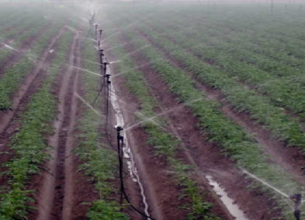Poor Soil Management will Erode Food Security
06, Dec 2022

Prelims level : Environment
Mains level : GS-III Environment & Biodiversity | Conservation, Environmental Pollution & Degradation, Eia
Why in News?
- December 5 is recognized as World Soil day.
Highlights:
- World Soil Day (WSD) is annually observed on December 5.
- The theme of WSD 2022 is ‘Soils: Where food begins.’ It aims to raise awareness about the importance of maintaining healthy soils, ecosystems, and human well-being through sustainable soil management.
Importance of Healthy soil:
- They are essential for human survival.
- Healthy soil supports healthy plant growth and enhances both nutrition as well as water percolation to maintain groundwater levels.
- Soils also regulate the climate of the planet by storing carbon and are the second largest carbon sink after the oceans.
- Moreover, they maintain a landscape that is more resilient to droughts and floods.
- Soil health is critical for healthy food production as the soil is the basis of food systems.
Soil Degradation and its consequences:
- The major threats to soil are nutrient loss and pollution, which are responsible for undermining food and nutrition security globally.
- The main drivers of soil degradation are agriculture, mining, industrial activities, waste treatment, fossil fuel extraction, and processing and transport emissions.
- The causes of soil nutrient loss are soil erosion, runoff, leaching, and the burning of crop residues.
- Soil degradation directly or indirectly impacts 29% of India’s total land area. Consequently, it threatens agricultural productivity, water quality, biodiversity conservation, and the socio-economic well-being of land-dependent communities.
- Approximately 3.7 million hectares of land suffer from nutrient loss in soil (that is depletion of soil organic matter).
- Moreover, uncontrolled fertilizers and pesticide usage and irrigation with contaminated wastewater also add to soil pollution.
Soil Conservation strategy of India:
- A five-pronged strategy has been adopted by the Government of India which involves:
- Making soil chemical-free
- Saving the biodiversity of soil
- Improving Soil Organic Matter(SOM)
- Sustaining soil moisture
- Mitigating soil degradation and preventing soil erosion.
- SOIL HEALTH CARD(SHC): Indian Government launched the scheme in 2015. SHC helps in assessing the current status of soil health. It also provides soil health indicators and associated descriptive terms to guide farmers to make necessary changes in the soil.
- PRADHAN MANTRI KRISHI SINCHAYEE YOJANA(PMKSY): The scheme was launched to prevent soil erosion, regenerate natural vegetation, strengthen rainwater harvesting, and ensure the recharging of the groundwater table.
- Moreover, National Mission for Sustainable Agriculture (NMSA) includes several sub schemes that promote indigenous practices like organic farming and natural farming, thereby reducing chemical dependency and reducing the monetary burden on small and marginal farmers.
- The Food and Agriculture Organization (FAO) also undertakes various activities to support the Indian government in conserving soil. For instance,
- FAO is collaborating with the National Rainfed Area Authority and the Ministry of Agriculture and Farmers’ Welfare (MoA&FW) to develop forecasting tools using data analytics to help farmers in making informed choices in crop cultivation, especially in rainfed areas.
- The FAO and the Ministry of Rural Development together support the Deen Dayal Antyodaya Yojana-National Rural Livelihoods Mission’s (DAY-NRLM) Community Resource Persons to increase the adoption of sustainable and resilient practices.
- The FAO works in 8 target States (Chhattisgarh, Madhya Pradesh, Mizoram, Odisha, Rajasthan, Uttarakhand, Punjab, and Haryana) to enhance crop diversification and landscape-level planning.
- The FAO, the Andhra Pradesh government, and the Indian Council of Agricultural Research (ICAR) are working together to support farmers in sustainable transitions to agroecological approaches and organic farming.







